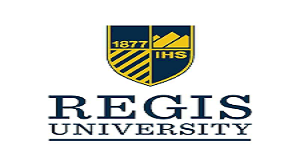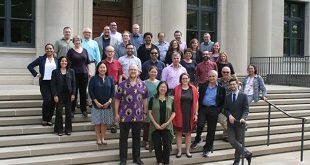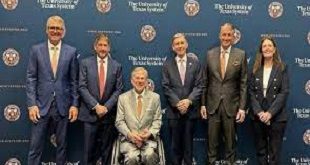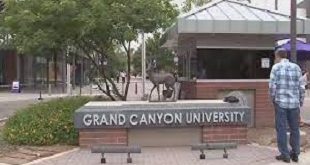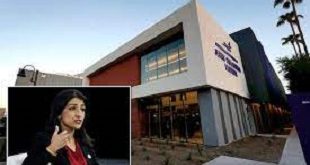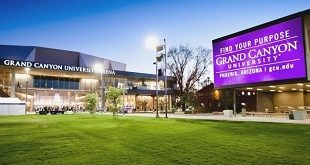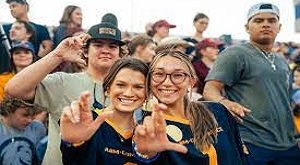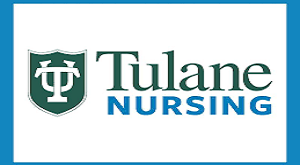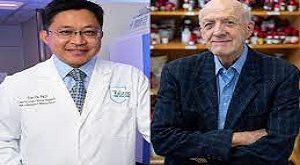About University of California Riverside
As a pleased individual from the world’s most esteemed state funded college framework, UC Riverside both typifies and engages the California Dream. On our nearly 1,200-acre campus in Inland Southern California, tomorrow’s leaders gather today to discover novel ways to think, act, and achieve in order to make a difference in a society that is becoming increasingly multicultural and interconnected worldwide.
At UCR, having a place, inspiration, and maintainable advancement for understudies, the district, and the world is genuine — and truly significant. According to the Center for World University Rankings, we rank among the top 1.3 percent of universities worldwide. Additionally, U.S. News has named us the nation’s leading public university for social mobility for each of the past five years.
Off grounds, our in excess of 26,000 understudies and 1,100 personnel — among them two Nobel Prize champs and 15 individuals from the Public Foundations of Science and Medication — approach our locale’s different geology, from the desert to the coast, as well as Riverside’s energetic social and sporting exercises. Nearby, all are enabled to speed up their striking thoughts. because our goal is crystal clear: to send off another age of imaginative scholars.
Root your schooling here in Inland Southern California, and watch your thoughts influence the world. You will be a part of a community where diversity equals vitality as a Highlander. Where backing and strengthening cheer everyone up and impel thoughts forward. Furthermore, education is more than just attending classes. Here, you won’t simply answer issues. You’ll be essential for worldwide arrangements.
The University of California Brief History
At the first Constitutional Convention in Monterey in 1849, a year after gold was discovered at Sutter’s Mill and before California joined the union, people expressed their desire for a University of California. All be that as it may, the new state, for its evident abundance, coming up short on means to help government and instruction. To fill the vacuum, tuition based schools and foundations jumped up. Among the originators was a modest bunch of churchmen sent by the American Home Teacher Society of New York to pastor to human spirits in the mining camps and blast towns. They opened the Contra Costa Foundation in Oakland in 1853. After two years, it was consolidated as the School OF CALIFORNIA. The establishment of the University of California was sparked by this institution’s gift of its land and buildings to the state.
Allies in those early years incorporated the Fire up. Samuel H. Willey, who had shown up in 1849 for work in the regional capital of Monterey; Sherman Day, the child of Yale’s Leader Jeremiah Day; the Yale-born Reverend Henry Durant, who would later serve as the University’s first President and head of the College of California; and the Reverend Dr. Horace Bushnell, who traveled to California for health reasons but spent his time looking for a location for the future university.
Land and a Contract
Obligation followed the School of California all along and bill gatherers regularly waylaid Durant in the roads of Oakland.Notwithstanding serious devotion with respect to Durant, the understudies, legal administrators, and companions of the school, what was in store stayed suspicious.In 1853, Congress had gave to the state 46,000 sections of land of public grounds, continues of the offer of which were to be utilized for a “theological college of learning.”In 1862, the MORRILL ACT offered an award of public grounds to each express that would lay out a school showing farming and the technician expressions – and California’s portion was 150,000 sections of land. In 1866, the legislature established an AGRICULTURAL, MINING, AND MECHANICAL ARTS COLLEGE by making use of this grant.
The new school had reserves however no grounds. The College of California lacked a suitable location and resources. Hence, when the School of California in 1867 offered its structures and terrains to the state on condition that a “complete college” be laid out to show the humanities as well as horticulture, mining, and mechanics, the governing body acknowledged. A new act was enacted, and the act of 1866 was overturned. Endorsed by Lead representative H. H. Haight on Walk 23, 1868- – Contract Day- – the new demonstration made the College of California.In addition to the Oakland site, the college’s property included land for a new campus four miles to the north among open fields and oak trees.After delayed thought by heads of the college development, the encompassing townsite was named for George Berkeley, Minister of Cloyne, who had visited America in 1729 in the desire for establishing an instructive organization for the proselytizing and training of “native Americans.” Making the opportunity not right, he gave the model to Columbia College and enriched three grants at Yale.
He is the creator of the sonnet whose lines strong an exceptional significance for Californians:
“Toward the west the course of realm takes its direction;
The four first demonstrations currently past.
A fifth will close the show with the day;
Time’s noblest posterity is the last.”
The University
The demonstration laying out the College shared its association and government with a corporate body entitled the Officials Of the College of California.The “minuscule band of researchers” available when the College opened in Oakland in 1869 included ten employees and 40 understudies. A few of the understudies had been signed up for the School of California. Alumni of the school legitimately became graduated class of the College in 1868. Of the College sanction class, 12 were graduated in 1873, to be referred to from that point as “The Twelve Witnesses.”When North and South Halls were finished in 1873, classes began at Berkeley—the latter building is still standing.The Officials of the College ignited an excitement when they chose as first President Nationwide conflict General George B. McClellan, who had gone againstAbraham Lincoln for the Administration of the US in 1864.General McClellan declined the honor, nonetheless, and in 1870
President Gilman
In 1872, Durant surrendered, expressing be accepted a more youthful man could more readily propel the interests of the College. By and by the Officials went to Daniel Coit Gilman of Yale who, this time, acknowledged the arrangement.Gilman taught at the University of California for three turbulent years. He was a highly sought-after educator.Disagreement rose on each side and, for a period, the pundits and foes of the College risked its actual presence. The use of funds and the relative emphasis on literary, agricultural, and scientific departments were the focus of criticism. Their interests were pressed by competing segments of the state’s young economy.The University’s alleged mismanagement of land-grant funds was the subject of a legislative investigation. In spite of the fact that it brought about the arrival of a perfect record, it certified that there terrible been a need of clear comprehension both with regards to the award and the administration of the College.In 1874, President Gilman offered to resign due to these annoyances, but the Regents dissuaded him. The next year, in any case, the proposal of the administration of Johns Hopkins College was too extraordinary an enticement and he acknowledged it.In the viewpoint of history, Gilman’s capacity to verbalize the job of a college sticks out.The University would have five presidents from 1874 to 1899: 1874-1981, John LeConte; William T. Reid, 1881-85; Edward S. Holden, 1885-87; Horace Davis, 1888-90; and Martin Kellogg from 1893 to 1994 (acting from 1890 to 93
Development for the 20th Hundred years
The turn of the century brought a faster pace and a wider range of University responses to state and national requirements.Albeit the initial two years of undergrad study kept on being general in nature, the assortment of upper division courses quickly expanded to meet the prerequisites of a creating society.
The University was developing the distinctive Californian characteristics of restlessness and seam-bursting vigor despite its geographic isolation from the great eastern centers of learning. Agribusiness, the humanities, and in particular, designing, were to shape the foundations of its initial specialties.
Berkeley attracted internationally renowned scientists and scholars. Eugene W. Hilgard, one of the country’s extraordinary geologists and soil physicists, joined the staff in 1875 and established the groundworks of the School of Horticulture. Five years sooner, the Officials had perceived the requirement for horticultural augmentation by approving “the Teacher of Farming” to visit whatever number agrarian focuses in the state as would be prudent and reach out to them the upsides of the school.
Samuel B. Christy became senior member of the School of Mining in 1885, with the obligation of spreading out research centers for one of the primary satisfactorily prepared mining schools on the planet. Under his heading, the standing of the school was immovably settled; before long understudies were coming from lands as far off as Peru and South Africa. Forthcoming H. Probert, an English mining engineer, who became dignitary in 1917, proceeded with the practice areas of strength for of.
Additionally, the College of Civil Engineering contributed significantly to the development of the fledgling nation. Soon after the turn of the hundred years, designing added a Branch of Water system headed by the global power, Elwood Mead, whose guidance was continually popular by nations tormented with the issues of dry environment. Under Charles Derleth’s leadership, the college would later be used by the federal government to plan enormous projects like the Hoover Dam.
Science, in the early years, was predominantly focused in the School of Science where the establishments were very much laid by a couple of prominent researchers. Gilbert N. Lewis joined the staff in 1912 and rose to prominence as the college’s dean and professor of physical chemistry.
Charles Mills Gayley was building a famous English department by the middle of the 1890s. Henry Morse Stephens, before his demise in 1919- – and after him, Herbert E. Bolton- – caused the investigation of history and California to appear to be practically equivalent. Alexis Lange, who became dignitary of the Institute of Training, was the dad of the lesser school plan so generally followed today.San Franciscans were anxious to foster exchange with the Orient and Berkeley’s School of Business was initially planned to prepare young fellows for the commodity exchange. Very quickly, nonetheless, it partook in an all the more comprehensively based achievement. It turned out that the state’s business and industry also needed men with college degrees. California’s trade with Europe and South America was boosted by the opening of the Panama Canal in 1915, which led to even more students enrolling at the college.Secretary of State Elihu Root, in the principal ten years of the new 100 years, pointed out the low quality of America’s consular officials, then to a great extent political representatives, and the College answered with a course for the preparation of unfamiliar help staff.Anatomy, anthropology, architecture, biochemistry, household art, household science, hygiene, physiology, Sanskrit, and Slavic languages were among the new departments established at the turn of the century. There was an incredible extension of existing divisions. The Branch of History and Political Theory became three: history, political theory, and financial matters.The College summer meetings, started in 1899 to prepare educators in physical science and science, met with an energetic reaction.
President Wheeler
Benjamin Ide Wheeler- – a recognized researcher, a man of enormous life – came to the College as its Leader in 1899- – and served in that limit with respect to 20 years. They were blasting a very long time for the College and President Wheeler appeared to be undeniably fit to the times.
“The main thing that is important to me in a college,” he said, “is people.”
What’s more, despite the fact that he saw the close connection of the College to the express, the significance of exploration, the need of an incredible library and extensive structures (and was himself one of the College’s most enticing asset raisers), he respected the essential job of higher advancing as the improvement of character.
Self-government by the understudy body had started in 1887 when the Related Understudies of the School of Letters and Science was coordinated. Early ages of understudies were an exuberant part, and it was President Wheeler who started a framework that at long last demonstrated palatable to all. Under “senior rule,” the senior class turned into the genuine disciplinary and regulation making body. So successful did this framework demonstrate that the staff by and by surrendered everything except a warning job.
Not long after Wheeler’s Administration, the actual personnel requested a more liberated get control over the control of its undertakings on the reason that if understudies would be entrusted with self-government, so could their older folks. This won for the Scholastic Senate the option to set its own standards, select its own individuals, and delegate its panels.There were 2,600 students at the university when Wheeler arrived; By the time he retired in 1919, the number had nearly doubled.
The University began the lateral growth that has accelerated over the years during that time. The College Homestead School was laid out at Davis, the Citrus Trial Station at Riverside, the Scripps Establishment for Organic Exploration at La Jolla, and the HOOPER Starting point for Clinical Exploration in San Francisco. The Southern Part of the College at Los Angeles was simply appearing. College Expansion, which had been laid out in 1892, developed quickly during President Wheeler’s organization.Graduate work extended and was officially perceived in the foundation of the Alumni Division.However, President Wheeler is mostly remembered for what he believed to be the most noble work of a university: the development of responsible and educated citizens.
Expansion of the Campuses
By 1923, the College of California drove the colleges of the US and the world in enlistment with 14,061 full-time understudies – outperforming that of Columbia College.Toward the finish of the 1920’s, it had presented in excess of 40,000 degrees. Its graduated class included four legislative leaders of California and a few US legislators and representatives. Different alumni were possessing places of liability in all roads of life and in many areas of the planet.
As far as scholarly and logical accomplishment, the College was not yet among the vanguard of the country’s extraordinary focuses of learning; in any case, it would quickly accomplish this status.Toward the west movement was enlarging the number of inhabitants in California and the College was unable to rapidly develop
enough. Principally in light of fast improvement of the “Southern Branch,” Teacher David Prescott Pushcarts of the Division of Political Theory, who succeeded President Wheeler, flagged his enlistment into office by giving the College its most memorable red-ink financial plan – red ink to the degree of a portion of 1,000,000 bucks.
The response from the Officials was, “It doesn’t appear to be sufficient.” Immediately, President Pushcarts expanded the shortfall to $670,000 and got the Board’s endorsement.
In 1920, voters were presented with an initiative measure that would have generated more than $4 million in state revenue. It paved the way for financial aid by legislative act a few months later, despite its narrow defeat.
The geographic size and state of the state and the development example of its urban communities made need not just for an enormous grounds at Los Angeles, yet for more modest ones to serve different districts. There would not be the long-term challenges that Berkeley’s development had presented for these new campuses. The need was better settled in the public brain. Legislators provided generous support; graduated class and different residents gave generously of the “extra” that have the effect between the just satisfactory and the outstanding.
Today there are nine grounds, BERKELEY, DAVIS, IRVINE, LOS ANGELES, RIVERSIDE, SAN FRANCISCO, SAN DIEGO, St Nick BARBARA, and St Nick CRUZ, and in excess of 100 exploration stations and subsidiary schools and exercises. They length and jumble the territory of California, from a top in the Sierra Nevada (the White Mountain Exploration Station) to underneath ocean level in the Majestic Valley (a rural field station
The Modern University
William Wallace Campbell, a teacher of space science and for a long time overseer of Lick Observatory, filled in as Leader of the College in the significant years 1923-30.
His organization was portrayed by consistent development and rising enlistments, the last option pattern proceeding with in any event, when the on-set of the Downturn foreshadowed a reduction of actual turn of events.
Until the 1930’s, the College stayed an exuberant however dominatingly provincial organization. In the event that one year can be said to have denoted a defining moment, it was 1934. That year the American Board of Training requested 2,000 driving researchers from the US to break down the doctoral level colleges of the country’s colleges.
The review covered 36 fields of learning. The departments of universities were categorized as either “distinguished” or “adequate.” Interestingly, the Elite level was constrained to recognize serious contest in the west. California evaluated however many recognized and sufficient offices as any college in the country.
President Sproul Robert Gordon Sproul became the first native Californian and University alumnus to hold the position of President in 1930.
He was to direct its fortunes longer than any of his ancestors – through three disastrous many years that incorporated the Downturn, The Second Great War, and the introduction of the nuclear bomb. What’s more, he was to see the College achieve world fame for logical accomplishment in a period when the group of logical information started to extend at a rate remarkable ever.
Sproul, who received his engineering degree from the campus of Berkeley, rose to the position of vice president and comptroller at the age of 34. Furthermore, he filled in as secretary of the Officials. He had been involved in athletics and student affairs while he was an undergraduate at the University; as President, he showed a natural handle of the issues of the undergrad.
None surpassed him in ability to prevail upon authoritative pundits and changing over them into ardent partners of the College.
At the point when President Sproul expected office, the College had turned into the main significant foundation in the country to grow to a multi-grounds plan. The issue of keeping up with solidarity of direction and soul among the different fragments had expected significant extents.
For a long time, President Sproul invested about portion of his energy at Berkeley, a third at Los Angeles, and the rest among the other grounds. In 1936, he and his family moved their primary home to Los Angeles for a year.
In the early 1950s, significant local autonomy was granted to the chancellors at Berkeley and Los Angeles, as well as to the provosts and directors on the other campuses, easing some of his responsibilities.
Two of his developments, intended to manufacture a more grounded solidarity among the grounds, have become piece of the College’s practices; the yearly gathering of the California Club, which empowers understudy pioneers from every grounds to meet, trade thoughts, and investigate normal issues; furthermore, the yearly All-College Staff Gathering, which serves a comparable capability for the workforce.
With the end goal of guaranteeing scholarly greatness, President Sproul from the outset pounded away at a solitary subject. The College of California should have the option to go after top employees – not simply with different colleges in that frame of mind with the main foundations in the country. Because of his influence in the legislature, UC was able to offer salaries and research and teaching facilities comparable to those of Eastern universities. Throughout the long term, he pulled in a splendid cluster of ability in basically every part of learning. Hence it was workable for the College, while extending on a level plane, to keep up with quality.
In 1929, Ernest O. Lawrence had developed the cyclotron at Berkeley, the first of a progression of “particle smashers,” in acknowledgment of which he was granted the Nobel Prize. This thus was the first of a progression of Nobel Prizes to come to individuals from the workforce.
The College commitment to public guard started in the last part of the 1930’s. Every campus became a center for research and education when World War II began. Great many individuals from the scholastic local area were conceded leave to participate in war work, to join the military, or to give full opportunity to logical examination. The campuses and UNIVERSITY EXTENSION participated in the technical training of personnel for California’s war industries under the University War Training Program. Research was conducted in the social and physical sciences, medicine and public health, and the improvement of nutrition for the civilian and military populations. Out of this work came significant leap forwards, prominently in the wellbeing and actual sciences.
The first atomic bombs were made at the University of Los Angeles’ LOS ALAMOS Scientific Laboratory. Their use at the end of World War II was a shocking demonstration of man’s power to destroy. Before long, notwithstanding, the country’s expectations could move in the direction of serene purposes of this huge new capability of energy, and principally they would move in the direction of the colleges.
For the College in those years, there were many proportions of significance. The staff had long driven in the quantity of recipi
ents of Guggenheim Partnerships. By 1955, it positioned second just to Harvard College in participation in the Public Foundation of Sciences; what’s more, a couple of years after the fact, it would involve in front of the pack.
Despite being sixth in size, Berkeley’s library came in third for the quality of its collections, behind only the Library of Congress and the Harvard Library. One of the newest and fastest-growing libraries in the nation, UCLA’s library reached one million users in 1953.
Actual improvement of the grounds, which had slacked during the downturn and been additionally deferred by war, would blast during the 1940’s and 1950’s. It needed to, for the College expected a quick top as colossal veteran enlistments and an ensuing time of supported development. Somewhere in the range of 1944 and 1958, the College gained the St Nick Barbara grounds and created human sciences schools at Davis and Riverside. The Clinical School at Los Angeles was started in that period. Postdoctoral training in the medical and physical sciences was in high demand, and graduate programs were expanding quickly.
A new wave of student demand for college admission was rising in California and across the country. New state and junior colleges began to appear everywhere at the start of Sproul’s lengthy presidency. Competition and pressure for new campuses and budgets increased with each session of the California legislature. President Sproul perceived that, except if means could be found for their methodical turn of events, the organizations of public advanced education confronted a possibly shocking course of rivalry.
He saw this as a public issue however one that held specific earnestness for quickly developing California. He had persuaded the legislature and the Regents to provide matching funds for a Carnegie Institute study in 1931. The outcome was one of three examinations. [*] during the decades that followed, culminating in the Master Plan for California’s Higher Education from 1960 to 1975.
Robert Gordon Sproul resigned in 1958. As President Emeritus of the College, he makes his office in a structure named in his honor. Clark Kerr, formerly Berkeley’s Chancellor, took his place.
* The others: the Strayer Board Report, approved by the council in 1947; A Restudy of the Requirements of California in Advanced education, approved in 1953.
The strategy that handles everything
The University anticipated a rise in enrollment to nearly 120,000 by 1975, from 44,000 in 1958. +] Offices would should be significantly increased in that period.
Additionally, the state and junior colleges required larger faculties and brand-new classrooms and campuses.
The issue could have plagued California- – soon to turn into the most crowded state- – had there not been early acknowledgment of the requirement for arranging.
In 1959, the council mentioned the Contact Panel of the Officials and the California State Leading body of Training to foster a long-range plan. The Master Plan was created by a survey team under the direction of the two boards. In December 1959, the Regents and the state board gave this the go-ahead in principle. An extraordinary meeting of the 1960 governing body passed the Donahoe Advanced education Act, integrating a large portion of the End-all strategy suggestions, and supported other regulation to execute the arrangement.
As a result, the state was able to proceed with expansion of all public higher education sectors without wasting resources through duplication. To accommodate new grounds and augmentation of others, the public liberally casted a ballot enormous development bond issues in 1956, 1958, 1962, and again in 1964.
The University continued to fulfill its previous responsibilities under the plan: college level guidance and expert instructing, examination, and public assistance.
In 1962, new admission requirements were implemented, making the University of California open to the top 12.5% of California high school graduates.
The arrangement accommodated the College’s lower division enlistment to be to some degree diminished comparative with upper and graduate division enlistments.
Certain lower division educational plans were nullified, since expanding quantities of understudies would do their lower division work at junior schools.
A joint Graduate Board was established by the University and the state colleges to develop procedures for a joint doctoral program and the award of joint doctorates in selected fields.
The plan called for the University to make its libraries available to the faculties of other educational establishments in the state
Accomplishments of the ‘Sixties
By 1960, UC’s enlistment was right around 50,000. Its seven grounds and many exploration stations were spread across huge number of sections of land. The operation of the entire business amounted to $360 million annually, and costs were skyrocketing for everything from enrollment to everything else. As a supplement to sheer measure, in any case, the College currently offered a lucky variety of scholastic and social passage and potential open doors for research that could be matched by scarcely any different organizations.
In his approach to mass education, President Kerr made the large seem small and personal in academic planning and delegated administrative authority to campus campuses.
His proposal for a major administrative reorganization in which the chief campus officers would be given most of the daily operational responsibility for the campuses was quickly adopted by the Regents. All through the principal half of the 1960’s, decentralization went on by stages, bringing about a significant decrease of the College wide managerial staff and a more prominent independence for the grounds.
In 1961, the Officials took on a College Scholastic Arrangement framing the necessities of the not so distant future and stressing the topic of solidarity with variety. There would be laid out in the following couple of years another graduate school at Davis, designing projects at Davis and St Nick Barbara, clinical schools at San Diego and Davis, engineering and metropolitan preparation at Los Angeles, and extended clinical enlistments at San Francisco and Los Angeles.
New broad grounds at San Diego, Irvine, and St Nick Cruz offered College organizers an uncommon chance for development and trial. As the first grounds to be planned from the very outset with a view to possible gigantic enlistments, they were urged to develop along lines that would encourage independence and simultaneously satisfy the College’s conventional guidelines of greatness.
Both San Diego and St Nick Cruz took on “bunch school” designs, an idea that would assist with decreasing the sensation of bigness while making the undergrad instructive experience more significant. Irvine, situated in the most quickly developing area in California, would underscore the connection of grounds to climate by offering solid projects in metropolitan preparation and natural plan.
Additionally, the administration was planning potential future campuses in light of the anticipated 273,000 enrollments by the year 2000. Regions viable were the San Joaquin valley, the San Gabriel or San Fernando valley, the North Inlet or North Coast region, and the Northern Sacramento valley.
The “knowledge explosion” and society’s efforts to keep up with it demanded more types of classes at higher educational levels and an ever-expanding range of research during the first half a dozen years of President Kerr’s administration.
Ten new schools or universities were made, 80 new projects prompting graduate degrees, and 68 to the doctoral certificate. A large number of these high level projects were laid out at Davis, Riverside, and St Nick Barbara, and a few at San Diego.
The Officials endorsed a significant long-range plan ensuring admittance to extraordinary exploration libraries for the new and more modest grounds. Berkeley and Los Angeles kept on fostering their assortments as essential examination sources, while their inventory cards were given College wide dissemination. Vehicles started utilizing day to day among little and enormous grounds to work with intercampus getting.
This plan encouraged the smaller campuses to acquire university-exclusive collections in addition to expanding their basic libraries. Significant economies were accomplished by having the San Diego grounds purchase and inventory books, for its own new undergrad library as well as, at the same time, for those of St Nick Cruz and Irvine.
Somewhere in the range of 1958 and 1964, the College’s educational staff expanded from 4,125 to 5,963 and each grounds currently guaranteed its portion of illuminating presences. With a growing list of awards, faculty and students alike were giving their school credit.
The University now has 12 Nobel Prize winners, including six more scientists. 29 individuals were chosen for the Public Foundation of Sciences, for an all out participation of 87. Guggenheim Partnerships won by the personnel in that period added up to 299. Rhodes Scholarships to Oxford University and Woodrow Wilson and National Science Foundation Fellowships were awarded to students with high rankings.
In the mean time, researchers were tracking down new open doors for the improvement of extraordinary interests in the humanities. A College wide Innovative Expressions Organization was laid out, empowering various employees to dedicate significant timeframes to imaginative movement.
Understudies were making the most of an open door uncommon in open advanced education given by a Schooling ABROAD PROGRAM. In 1962, the University of Bordeaux established the first overseas center. Goettingen, Padua, Madrid, Tokyo, Bogota, Edinburgh, Hong Kong, Sussex, Birmingham, England, Lund, University of the Andes, and Delphi are currently on the approved list of study centers.
In the mid 1960’s, the Officials made an extraordinary grant program for remarkable understudies requiring monetary guide, and made accessible various educational cost grants for excellent understudies from different nations, in this way enhancing programs that had been upheld for a long time by graduated class and the state. The Officials additionally gave matching assets to grounds undertaking Unique Open door Projects intended to support qualified secondary school understudies from burdened foundations to go to the College.
During this period, the College sped up and widened its administrations to individuals and legislature of California. Metropolitan, state, and regional issues were the focus of research at Berkeley, Los Angeles, and Davis’ special institutes of governmental and public affairs. The astonishing capability of robotics was investigated on a few grounds. College researchers kept on pursuing answers for such issues as brown haze control, water preservation and the desalinization of ocean water, traffic and air terminal security, sewage removal, ranger service protection, and the confirmation of sufficient nourishment for a developing populace.
The expansion of University Extension’s offerings, which saw more than 200,000 registrations for courses in a single year, reflected the demand for “lifelong learning.” Continuing Education of the Bar and Continuing Education in Medicine and the Health Sciences had programs for a significant number of the state’s doctors, dentists, and lawyers. Engineers, researchers, instructors, and financial specialists – the greater part holding something like one degree, and numerous with an expert’s or a doctorate- – were getting back to the homeroom at stretches all through their vocations.
